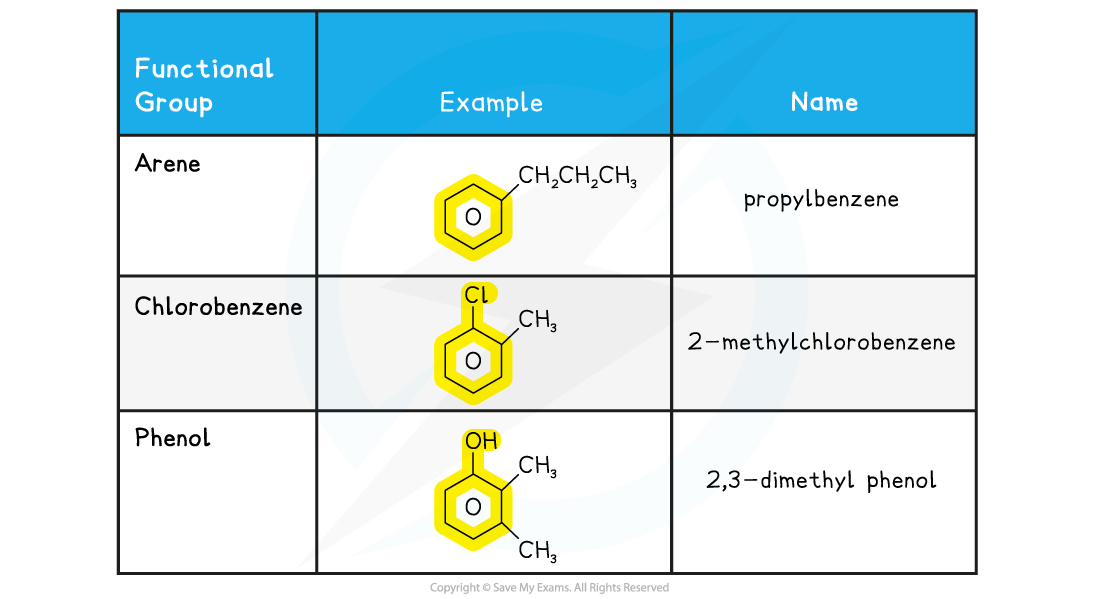The Structure of Benzene
- In normal, everyday conversation the word 'aromatic' is used to refer to pleasant, fragrant smells
- However, in chemistry, it is used to describe molecules that contain one or more benzene rings, i.e. a ring with conjugated π systems
- Conjugated π systems arise from alternating double and single bonds in which the electrons are delocalised
- Benzene is found in many useful pharmaceuticals, pesticides, polymers and dyes
- The common painkillers aspirin, paracetamol, ibuprofen and morphine all contain benzene rings
Examples of aromatic compounds including benzene table

Structure of Benzene
- The structure of benzene was determined many years ago, by the German chemist Friedrich August Kekulé
- The structure consists of 6 carbon atoms in a hexagonal ring, with alternating single and double carbon-carbon bonds
- This suggests that benzene should react in the same way as an unsaturated alkene
- However, this is not the case

Like other aromatic compounds, benzene has a planar structure due to the sp2 hybridisation of carbon atoms and the conjugated π system in the ring
- Each carbon atom in the ring forms three σ bonds using the sp2 orbitals
- The remaining p orbitals overlap laterally with p orbitals of neighbouring carbon atoms to form a π system
- This extensive sideways overlap of p orbitals results in the electrons being delocalised and able to freely spread over the entire ring causing a π system
- The π system is made up of two ring shaped clouds of electron density - one above the plane and one below it
- Benzene and other aromatic compounds are regular and planar compounds with bond angles of 120 o
- The delocalisation of electrons, as shown below, means that all of the carbon-carbon bonds in these compounds are identical and have both single and double bond character
- Single covalent bonds have a bond order of 1 and double covalent bonds have a bond order of 2
- The covalent bonds within benzene have a bond order of 1.5
- The bonds all being the same length is evidence for the delocalised ring structure of benzene

The Delocalisation of Benzene Model






